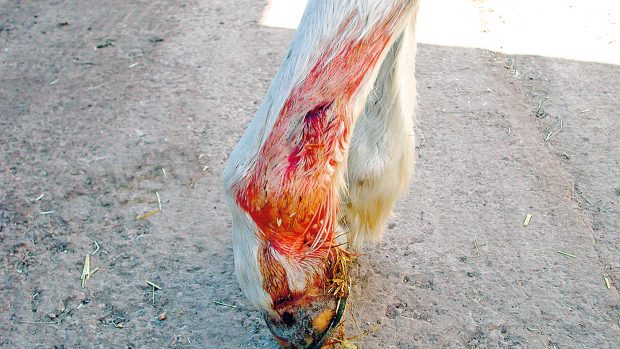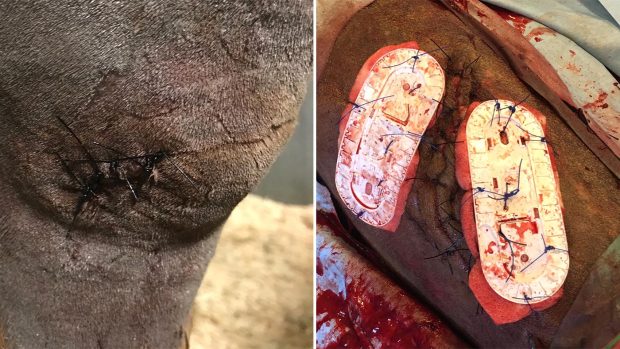Many lower leg wounds can be described as over-reaches but the first aid each requires will differ depending on the precise cause.
Horses can injur themselves by:
- The hind foot striking into the front heel – an overreach
- Wounds on the inside of the leg, below the knee or hock, caused by the inside of the oppositeleg’s hoof – speedicut
- The hind foot striking into the front leg anywhere above the heel, including causing damage to the flexor tendons – a strike injury
- Wounds around the coronet that are the result of a horse treading on himself, often while travelling – treads
Such wounds can range from trivial scrapes requiring a minor clean-up to crippling injuries that damage the vital tissues of the lower limb and can end a horse’s career.
First aid
- Assess the degree of lameness. With any trauma, the horse can be sore, but persistent lameness implies serious damage. Call your vet.
- Stop bleeding. If there is major bleeding, encourage clotting by applying a clean pressure bandage over the wound. Tape a pad in place for at least five minutes.
- Clean the wound. Low-pressure cold-hosing is a good method, as it numbs pain. Blood and dirt should be wiped away with moist swabs.
- Assess the damage. A small skin wound is not trivial if the horse is very lame: serious damage is likely, especially with strike injuries in which the leg was bent when it was struck. There may be underlying tissue damage away from the wound site.
- Cover the wound. Use a gel to start wound repair. These can be applied directly to the injury, which should then be dressed. Most wounds will be too bruised to suture, but your vet can advise.
Danger areas
- Deep wounds at the back of the pastern that may involve the tendon sheath
- Wounds around the coronary band, which can indicate coffin joint damage
- Wounds around the back of the cannon bone may mean tendon damage
- In each of these cases, or if the horse is lamer than you would expect, consult your vet.



